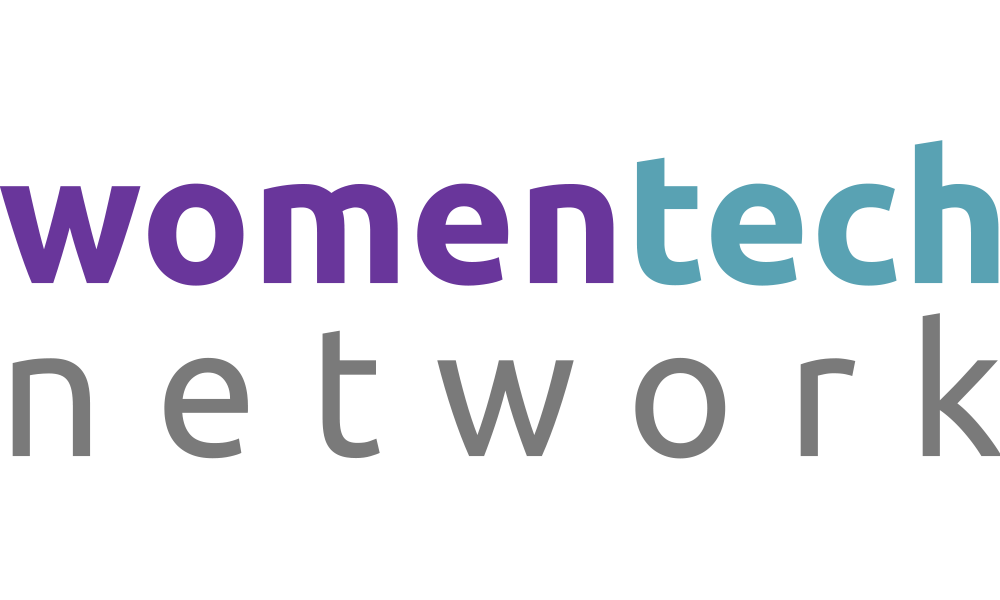Lessons in Leadership for the AI Era by Angela Byers
Angela Byers
Senior Director, Product Marketing, Microsoft 365 CopilotReviews
Leadership Lessons for the AI Era: Embracing Authenticity and Inclusivity
Welcome to my blog! I'm Angela Byers, and today I want to discuss some valuable leadership lessons that I've learned throughout my career, especially as we navigate this new AI-driven world. My journey has been shaped by early experiences that taught me the importance of leading with authenticity and creating inclusive spaces. Let’s explore how these principles can transform our workplaces.
1. Lead with Who You Are
My story begins at the age of 12 when my family moved from Hong Kong to Wisconsin. I struggled with English and felt like an outsider. This experience instilled in me a profound lesson: leadership is not about fitting into a predefined mold but reshaping spaces for everyone to belong.
- Understand Your Strengths: Initially, I tried to conform to traditional leadership norms—being vocal and decisive. However, I soon learned that my introverted nature, characterized by deep listening and thoughtful responses, was my greatest asset.
- Embrace Authenticity: During chaotic reorganizations, I realized that leading with clarity and calmness was more beneficial than trying to be the loudest voice in the room.
In today’s rapidly changing environment, your authenticity as a leader enhances collaboration and fosters a sense of community within your team.
2. Make Work More Human
As AI becomes increasingly prevalent in our workplaces, the dominant narrative often focuses on speed and efficiency. But, is that really what we need? I believe that AI should enhance our humanity, rather than amplify stress and overwhelm.
- Rethink Productivity: Instead of merely leveraging AI for speed, let’s use it to make our work lives more manageable and enjoyable.
- Leverage AI Thoughtfully: Tools like Microsoft 365 Copilot can help decode complex contexts, allowing for enhanced productivity while reducing cognitive overload.
By using AI to empower those who often feel marginalized—such as neurodivergent individuals or non-native speakers—we can create truly inclusive environments.
3. Embrace Diverse Perspectives
Creating an inclusive culture requires intentional actions. Here are some inclusive habits that can strengthen your team:
- Regular Check-Ins: Ask simple questions to gauge comfort and encourage openness. Follow up with team members to ensure their voices are heard.
- Redefine Meeting Dynamics: Assign roles like facilitator or devil's advocate to encourage diverse contributions. Use structured agendas and collaborative tools to manage discussions effectively.
- Enhance Transparency: Implement clear frameworks like Objectives and Key Results (OKRs) to align team objectives and encourage contributions from various stakeholders.
- Conduct Calendar Audits: Regularly review your calendar to ensure you are engaging with all team members equitably and providing them with opportunities to contribute.
Taking Action: Steps for Leaders
As we reflect on these lessons, consider the following steps to enhance your leadership:
- Identify Your Strengths: Take assessments like the Gallup StrengthsFinder to understand your strengths and motivations better.
- Learn How to Use AI Wisely: Dedicate time to learn about AI applications suitable for your role, aiming to adopt one new use case each week.
- Adopt One New Inclusive Habit: Whether it’s creating space at meetings for contributions or enhancing operating rhythms, small changes can lead to significant impact.
Conclusion
As we embrace this unprecedented era of AI and technological transformation, it's vital to choose how we lead. Leaders who leverage AI wisely, prioritize humanity, and foster inclusivity will build stronger, more resilient teams. Let’s seize this remarkable opportunity to innovate better, lead more authentically, and ensure that no one is left behind.
Thank you for reading, and I encourage you to reflect on these lessons and take meaningful steps in your leadership journey!
Video Transcription
Well, welcome everyone. I'm Angela Byers, and I am excited to be here today. So a little bit about me.When I was 12, my family moved from Hong Kong to a town in Wisconsin. You could imagine I couldn't converse in English very well and at that time I had very little understanding of American teenage culture and I was one of two Asian kids in my entire school. Everyone just assumed I was a foreign exchange student. So altogether, my memory from that period in my life is feeling like an outsider. Something that especially stucco was raising my hand again and again in class and being overlooked most of the time. And eventually I just stopped raising my hands. So that feeling of some having something to contribute but not really finding a place to contribute it, that kind of stuck with me.
And I imagine you have had similar experiences and moments where you felt invisible or underestimated. Today, I lead marketing for one of Microsoft's fastest growing AI businesses. Those early experiences really shaped something crucial about how I see leadership. Those stories reminded me that leadership isn't about fitting into a predetermined mold. It's about reshaping spaces so that everyone feels like they belong. As we step into this AI era, I believe inclusive leadership isn't just important, it's essential. I believe that the choices we make today will shape who thrives tomorrow, and that's exactly what I wanna talk about in the next fifteen minutes, leadership lessons I've learned for this new AI driven world. So the first lesson is personal and foundational from that story I was just telling you. It's leading with who you are. You know, early on in my career, I got a lot of feedback about how I should exhibit more leadership characteristics.
Being vocal no matter whether there was anything material to say or sound indecisive no matter how ambiguous the situation is. So I try to be responsive to that those feedbacks. I try to be the person that speaks first, commands attention, and always be quick to answer. I tried that for a little bit, but it was exhausting and ultimately, I don't think it was really effective either. You see, I'm an introvert. I listen deeply, I process thoughtfully and I speak deliberately. For years, I have really thought that those were weaknesses that I should overcome. But really, I've come to realize that those are actually superpowers. I remember taking on a leadership of a new team during a reorganization time. You imagine very turbulent. Everybody was stressed and there wasn't a whole lot of clarity, just a lot of chaos. Initially, I thought the team needed a loud and loud voice at the front.
But, you know, over time, the short story was that I realized what they really needed was the calmness and clarity, someone that could slow things down and bring thoughtful direction and make room for their voices. When I leaned into my genuine strength, listening deeply, asking thoughtful questions, creating space for collaboration, my leadership actually became more effective. Not only did the team feel heard, they felt respected, and they felt that they had clarity on what they should be prioritizing. So we navigated through that reorg, not despite my authentic style, but because of it. I believe that in this era of rapid change, your greatest strength as the leader won't be about fitting a stereotype. They'll be about your authenticity. By leading from who you really are, you make room for others to do the same.
Which leads me to my second point about making work more human, you know, especially now as AI reshapes our workspaces. Right now, the dominant narrative around AI is about speed, productivity, and efficiency. And, yes, AI can absolutely do all of that, help us move faster. But I think that if we're not careful, it can also just amplify all the pressure that we people already feel at work. I think the most important opportunity AI offers isn't more speed, is more humanity. Think about your average workday. You probably all have overflowing inboxes, endless meetings, constant context switching. That cognitive overload has become the norm, and really burnout is everywhere. But what if we used AI not just to do more, but to help us feel better while we're doing our work?
Tools like Microsoft three sixty five Copilot can summarize complex threats, extract insights from lengthy documents, reduce the friction that might make work exhausting. It can provide clarity, context, and the space to actually think, perhaps even think outside the box and be creative. Consider this, a neurodivergent colleague who struggles with rapid fire meetings can now use AI to review conversations at their own pace and contribute thoughtfully. A non native speaker can rely on AI to draft messages and emails, getting it to the right tone, reducing that anxiety around communication. A parent returning from leave can quickly catch up and rejoin projects without feeling completely overwhelmed. They can ask AI to help them, point out what are the most important things they should be focused on and stakeholders to collaborate with.
When used thoughtfully, AI can empower people who've often been excluded by traditional ways of working. It can make workplaces genuinely more inclusive. So the crucial question we have to ask ourselves as leaders is, will we use will we use AI just to push harder, faster, longer, or will we intentionally use it to take some of that pressure off, making our teams feel more supported and more valued? This question isn't just about how we show up for others. It's about how we lead, how we process complexity, explore ideas, and make this better decisions in real time. You know, because because AI really isn't just an execution tool, it can be a thought partner. As a marketing leader, I use it to get up to speed on a new market, you know, quickly understand customer trends, serving the competitive landscape when I'm scoping a new growth opportunity. I use it to spark new ideas from taglines to value propositions.
I even use it to stress test stress test solutions by comparing different points of views because it's kind of like having access to a bunch of experts and customers so I can ask them different the pros and cons of different options on demand. And that way I can challenge my assumptions and lead with greater clarity and confidence. And on the power of diversity of thinking, it leads me to my third lesson. Actively embrace the diversity of different points of views and thinking approaches. Practice inclusive habits. Inclusive culture aren't created by choice by chance. They are created by choice. They are built through consistent and intentional practices. So let me share four small but powerful habits that I've been using. First, within your team, post checks. Regularly ask your team simple questions like, do you feel comfortable speaking up? What can we do to make the space more inclusive? These aren't formal surveys. They're just conversations that create openness and trust. I often end my one on one with, is there anything I should note that people aren't telling me? Second, meeting hygiene.
One thing I like to do is give different people, different team members different roles like facilitator, note taker, or even devil's advocate in a meeting. This ensures that everybody contributes, even those who aren't typically comfortable speaking up spontaneously. It breaks down that traditional power dynamics and encourages broader participation. When possible, come with a structured meeting agenda so people know when and how to contribute. Use that hand raise feature in Teams because so that people don't speak over each other and there's an orderly way to provide their ideas. And I like to always leave space at the end of a meeting to ask if there's anything anyone else would like to cover or tee up for next time. And embrace that ten seconds of silence so that people have a chance to speak up. Third, create transparency and efficient forums for others to contribute.
You know, really big projects, big initiatives inherently involve very, very large village of stakeholders. For people to know to be able to contribute their insights and ideas, they have to know how and where on what occasions. It is a leader's job to create clarity on the priority work streams, for example. Objectives and key results, OKRs, are a great way to do it. It's a goal setting framework used by individuals, teams, and organizations to create alignment and engagement around goals. So objectives are the qualitative aspirational goals, key results are the measurable drivers to contribute to that achievement, and initiatives are the actions that will be taken to achieve to achieve those key results. I've been using that for years, and when I publish those for the team, other teams are then very clear on what are the priorities and what are the non priorities.
I believe it's also a leader's job to establish a predictable structure series of synchronous meetings and asynchronous channels to review progress to goals. Those forums are also the place to discuss drivers and learnings behind those progress and a forum and a place to brainstorm new ideas in an agile fashion. Fourth habit, calendar audits. Your calendar tells a clear story about your priorities. Every few weeks, I step back and review mine. Who am I consistently meeting with? Who am I inadvertently overlooking? It's an honest look in the mirror that helps ensure equity and inclusion on how I spend my time. These habits don't just build inclusive teams, They build stronger teams more capable of thriving together. As we navigate this unprecedented era of AI and technological transformation, we face a profound choice as leaders.
Will we use these tools purely to amplify productivity or to meaningfully elevate humanity? My experience has taught me that the strongest leaders in this moment won't be those who move the fastest. They'll be the ones who move intentionally, thoughtfully, and inclusively. Leaders who not only leverage AI, but leverage it wisely, using it to give people a voice, to make work more sustainable, and to build teams that are more resilient, more human, and more connected. Women in tech especially have a unique opportunity right now to lead differently. We can all lead with authenticity using our true strengths rather than trying to fit an outdated mold. We can design more inclusive ways of working where everyone can thrive. We can create teams that move quickly, yes, but also intentionally and sustainably. Fundamentally, leadership at its best is deeply human. It's about seeing people, not just seeing resources.
It's about creating space and not just efficiency. I think we stand at a remarkable moment in time. So I love that we could all use this moment not simply to innovate more, but to innovate better, that we can lead more authentically, more intentionally, and making sure that this era of AI leaves no one behind. For three steps that you can take on each of the three lessons I talked about, first, I encourage you to take an assessment like the Gallup strength finder if you haven't taken one or haven't taken one recently because people do change, either change. That way you really understand your strengths and your motivations, and you can lead with that and make that your superpower. Second, to use AI for humanity and for good, you have to understand it. You have to use it. And, you know, behavior change just does not come naturally, so you have to carve out time on your calendar to actively learn it.
For myself, I try to give myself a goal to learn to use AI to help with a new task every week, and I pick the use cases that stick and work out. Third, pick a new inclusive habit to practice. Whether it is something small like actively creating space at the end of a meeting, asking if anyone else has anything else to contribute, or take a bold step in upgrading your team's operating rhythms, or even across different functional teams so that you really make sure that diversity of inputs and ideas are heard.
Thank you so much.







No comments so far – be the first to share your thoughts!